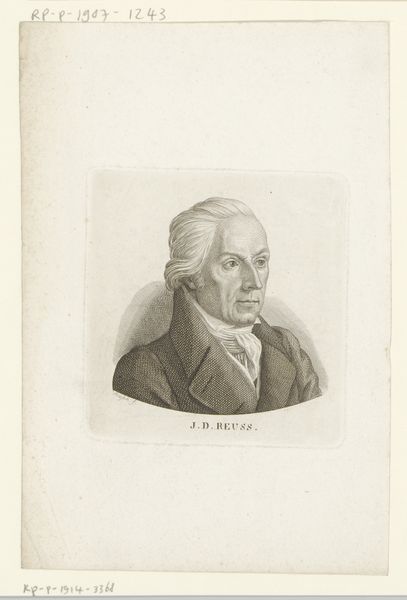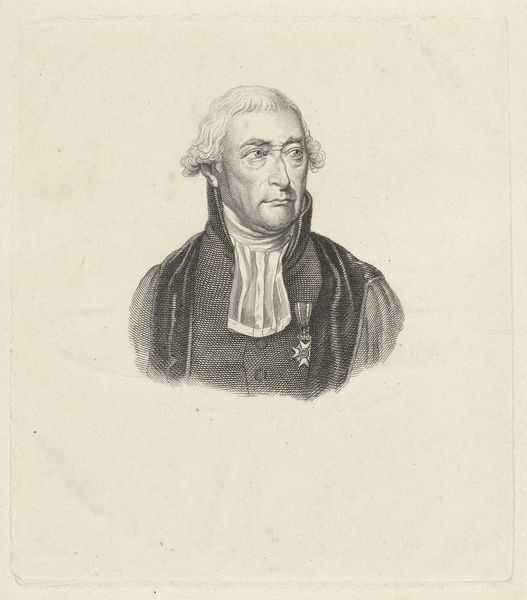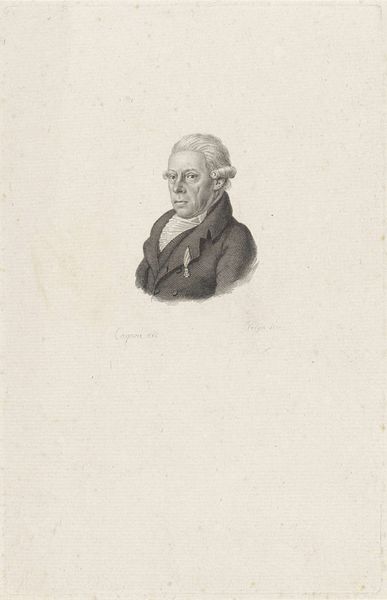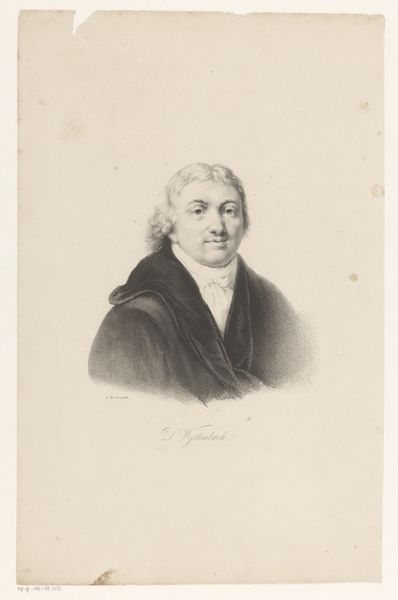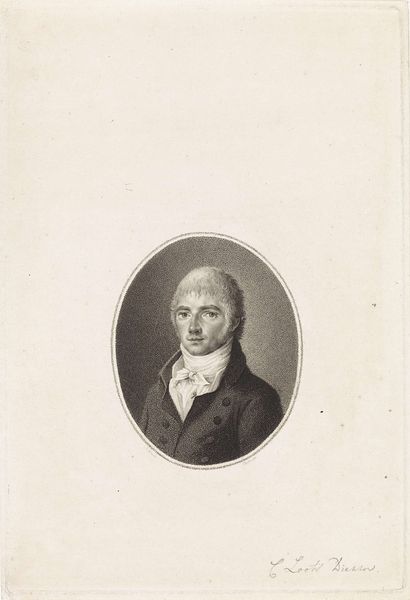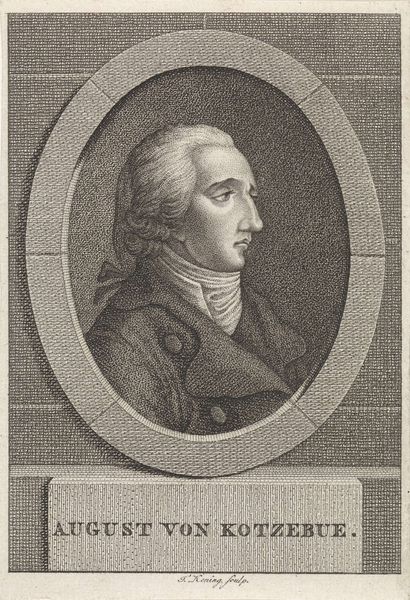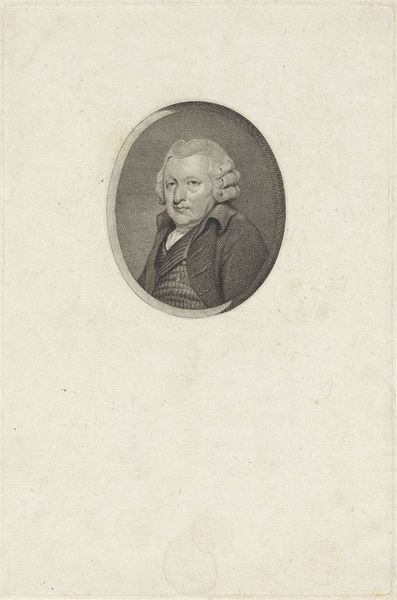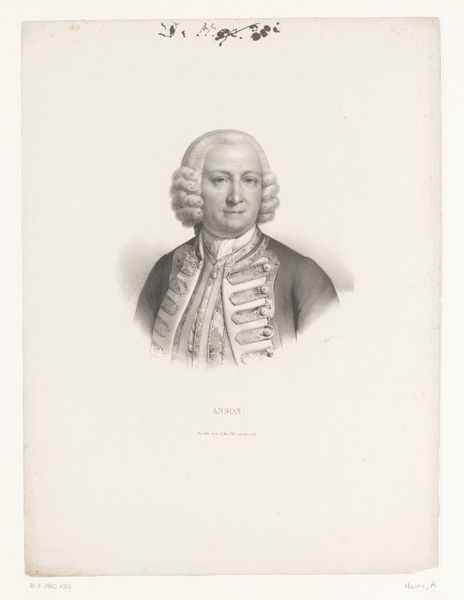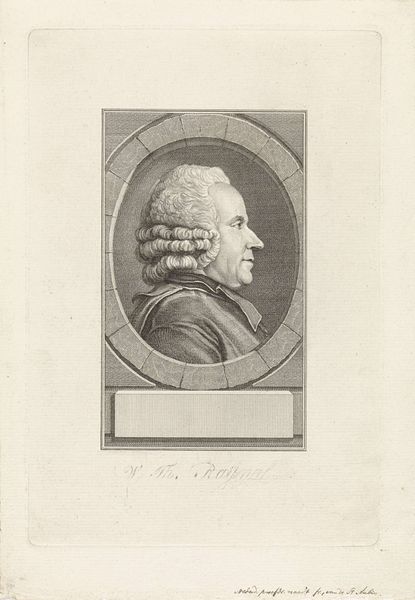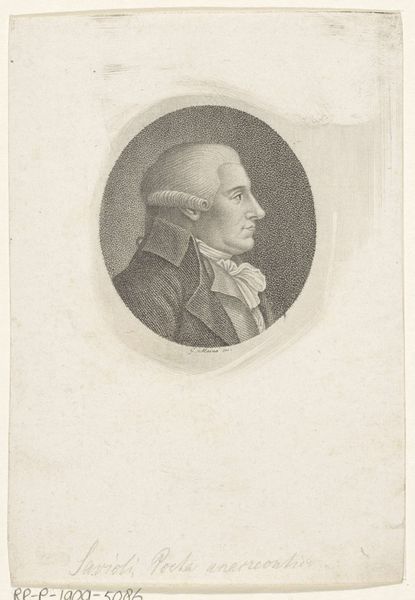
paper, engraving
#
portrait
#
neoclacissism
#
charcoal drawing
#
figuration
#
paper
#
portrait drawing
#
academic-art
#
engraving
Dimensions: height 117 mm, width 97 mm
Copyright: Rijks Museum: Open Domain
Curator: Jacob Ernst Marcus' "Portret van Pieter Barbiers," made in 1817, employs engraving on paper to depict its subject. The work resides here at the Rijksmuseum. I find the formal qualities of this engraving fascinating, particularly the balance of light and shadow achieved through line work. What catches your eye? Editor: The precision is what strikes me most, the clean lines giving the subject a kind of…stately reserve? I’m curious about the details and how they add up to create this effect. What do you see in this piece formally that reinforces that sense? Curator: Notice the artist's skillful use of hatching and cross-hatching to define form and create tonal variation. The density and direction of these lines meticulously model the subject’s face and clothing. Do you see how the controlled and even distribution of these marks contributes to the overall sense of order and, indeed, reserve? Editor: I do. It's like everything is carefully considered, nothing feels accidental. So the very technique emphasizes control? Curator: Precisely. The evenness and precision, evident in the engraved lines, suggest a conscious decision to subdue emotion in favor of reason. This reflects the Neoclassical preference for clarity, order, and rationalism. Now consider the stark background. What effect does it produce? Editor: It puts all the emphasis on the figure, almost isolating him… so the formal elements really construct not just what we see, but how we interpret the person portrayed. Curator: Indeed. The restraint in both technique and composition reinforces the sitter’s social position while also evoking Neoclassical ideals. It is this interplay between form and perceived content that reveals the essence of the artwork. Editor: That makes me see the work differently now, not just as a portrait but as a statement about a specific moment in time and a certain way of thinking about the world. Curator: Exactly. By closely observing formal choices, one can discern underlying ideologies and cultural values embedded within the work.
Comments
No comments
Be the first to comment and join the conversation on the ultimate creative platform.
